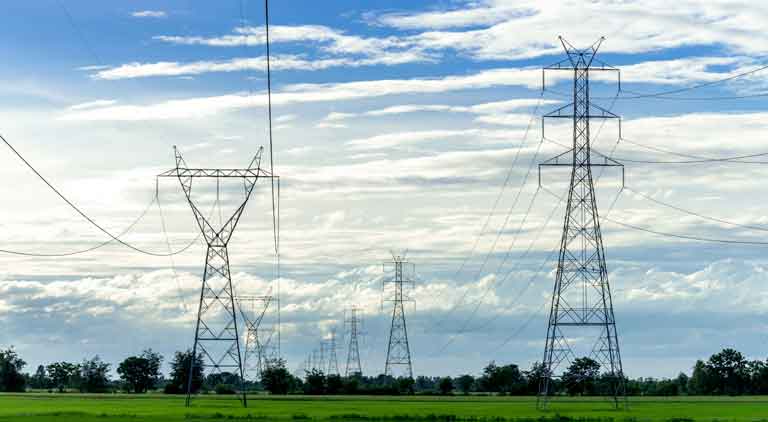HT & LT wires: Making waves in the power sector
By EPR Magazine Editorial March 4, 2020 11:09 am IST
By EPR Magazine Editorial March 4, 2020 11:09 am IST

The wires and cables market in India comprises nearly 40 percent of the electrical industry and is growing at a CAGR of 15 percent as a result of growth in the power and infrastructure segments. The segment has been witnessing unprecedented growth owing to the boost provided by the recent policy and regulatory initiatives as well as government schemes.
Wires and cables sector benefit from government schemes
Government schemes like Pradhan Mantri Sahaj Bijli Har Ghar Yojana, Ujjwal DISCOM Assurance Yojana (UDAY), Integrated Power Development Scheme (IPDS), and Deendayal Upadhyay Gram Jyoti Yojana (DDUGJY) are benefitting the cables and wires sector and enabling them to grow rapidly. Naman Singhal, Director, Prime Cable Industries Pvt. Ltd. says, “These schemes are definitely beneficial for us. We primarily focus on control cables, which mainly have application in transmission business. Efforts are on to connect all the grids, and every cable now is being installed underground. So we will see fewer aerial cables in the future, which will reduce power losses.”
Electricity demand set to rise further and boost cables and wires
Deepak Talware, Regional Manager, KEC Intl Ltd (RPG Cables) states, “As a wire cable unit, we are trying to achieve better quality, for which we are importing more German machines and are pushing for Make in India. Among raw materials and internal materials, copper and aluminium constitute a major chunk of the market, contributing around 45-50 percent. Copper and aluminium are non-ferrous metals and are manufactured by companies like MALCO Energy Limited, NALCO, Hindalco and so on. There are certain imports also, but prices are driven by the London Metal Exchange (LME) which fluctuates every day. That is one of the main challenges.”
Singhal says, “Another thing is that the electrical industry is very competitive. In the wires and cables sector, there are unorganised and organised players. But you will find that very few cable companies are organised. The challenges in the high-tension (HT) and low-tension (LT) wires segment are the quality and price differences that manufacturers face. Some vendors quote 20-30 percent less as they provide lower quality, and as a manufacturer, we know that such low costs cannot be achieved. There should be more quality barriers that the government needs to set in place. Stricter inspections need to be made. Third-party inspection must also be done. Samples must be sent to third-party inspectors so that quality can be crosschecked.”
Talware says, “In the wires and cables sector, the challenges that we are facing currently is pricing because in this particular sector, the major costs are raw material costs, which contribute almost 70-80 percent of the total selling guide.”
So, that is a challenge which the wires and cables sector has seen. Moreover, it is a very competitive market and working capital also has to be managed effectively because a lot of costly raw materials are required. If companies maintain the ratio in the FG and sale, then at least they can get a good margin and run their business.
New product plansNew technologies to be seen in the market
Talware states, “Earlier in India, people used to buy LT cables, but now that trend has gone on to 220 kV as that is becoming very normal now. Even people and utilities are buying 400 kV cable. Currently in India, there are hardly few players which are manufacturing 220 kV cables; mainly the utilities are buying this type of cable. So they are buying and even importing this cable. In India, this market has to be still developed because cable is a tailor-made item and if all the utilities and the state utilities had their own specification, it gets standardised somewhere like HT & LT cable since it becomes a most standardised item everywhere. So it’s a similar thing that is happening in this segment and also for EHV cable, technology will not have too many new developments and the import will be reduced. Import of cables will also be reduced. And apart from that, I think that the new demand would actually be cable because 472 20 kV kind of voltage has been used in India. For 400 kV, out of that, at 800 TV HVDC cable that technology will come, I think in the near future. Currently there are no manufacturers in India for HVDC. We are only importing these products. So, I think that the technology will come in a couple of years. Indian manufacturers will also come up with the same kind of technology.”
Efforts are on to connect all the grids, and every cable now is being installed underground. So we will see fewer aerial cables in the future, which will reduce power losses.
Naman Singhal, Director,Prime Cable Industries Pvt. Ltd.
In the wires and cables sector, the challenges that we are facing currently is pricing because in this particular sector, the major costs are raw material costs, which contribute almost 70-80 percent.
Deepak Talware, Regional Manager,KEC Intl Ltd (RPG Cables)
We use cookies to personalize your experience. By continuing to visit this website you agree to our Terms & Conditions, Privacy Policy and Cookie Policy.